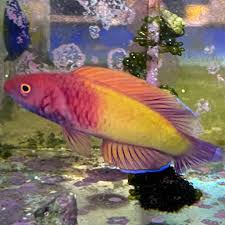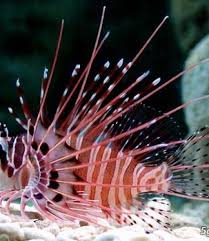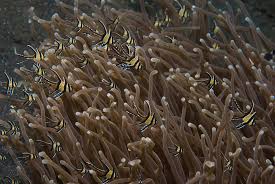The dragon (龙, lóng) has been a central figure in Chinese cosmology, mythology, and philosophy for thousands of years. More than just a legendary creature, the dragon represents the profound connection between yin and yang (阴阳)—the dual forces that govern balance in the universe.
This article explores the role of dragons in yin-yang philosophy, their symbolism in cosmic harmony, and their presence in traditional Chinese myths and beliefs about the universe.
1. The Dragon as a Symbol of Yin-Yang Balance
1.1. Understanding Yin and Yang in Chinese Philosophy
Yin and yang is the fundamental concept of balance and duality in Chinese philosophy. It explains the interconnected and interdependent forces that shape existence.
- Yin (阴): Associated with darkness, femininity, passivity, the moon, and water.
- Yang (阳): Associated with light, masculinity, activity, the sun, and fire.
Rather than being opposing forces, yin and yang complement each other, creating harmony in the universe. The dragon, a mythical creature that moves between the heavens, earth, and seas, embodies the fusion of these two forces.
1.2. The Dragon’s Role in Yin-Yang Harmony
In Chinese cosmology, the dragon is neither purely yin nor purely yang—it exists between both realms, balancing their energies.
- As a water creature, the dragon represents yin, linked to fluidity and adaptability.
- As a celestial being, the dragon embodies yang, symbolizing strength and movement.
- As a guardian of nature, it unites these forces, ensuring the balance of cosmic energies.
This dual nature makes the dragon a perfect representation of harmony and equilibrium, explaining its presence in feng shui, astrology, and spiritual practices.
2. Dragons and Cosmic Order in Chinese Mythology
2.1. The Dragon and the Creation of the Universe
One of the most important Chinese creation myths describes the primordial chaos before the universe was formed. According to legend, the cosmos was shaped by the cosmic dragon, Pangu (盘古), whose body transformed into different elements of the universe.
- His breath became the wind and clouds.
- His voice became thunder.
- His body became the mountains.
- His blood became the rivers.
This story reflects the dragon’s role as the bridge between the heavens, earth, and cosmic forces.
2.2. The Dragon and the Four Celestial Beasts
In Chinese astronomy, four mythical creatures guard the four cardinal directions, each representing a different cosmic force:
- Azure Dragon (青龙, Qīng Lóng) – East, Spring, Wood element
- Vermilion Bird (朱雀, Zhū Què) – South, Summer, Fire element
- White Tiger (白虎, Bái Hǔ) – West, Autumn, Metal element
- Black Tortoise (玄武, Xuán Wǔ) – North, Winter, Water element
The Azure Dragon symbolizes growth, vitality, and renewal, ensuring the flow of yin and yang energy through nature. It is believed to bring balance between seasons and maintain cosmic harmony.
3. The Dragon and the Duality of Heaven and Earth
3.1. The Dragon’s Connection to the Heavens
Dragons are often depicted as celestial beings soaring among the clouds, controlling rain and storms. In ancient China, they were believed to reside in the heavens, overseeing cosmic order.
- The Heavenly Dragon (天龙, Tiān Lóng) guards the realm of the gods and ensures the balance of universal forces.
- Imperial dragons on robes and palaces symbolize the emperor’s connection to divine wisdom.
- The Dragon Dance in Chinese New Year celebrations is a reenactment of dragons summoning rain and blessings from the heavens.
3.2. The Dragon’s Connection to Earthly Energies
While dragons are celestial beings, they are also deeply tied to the earth and water. Ancient myths describe dragons dwelling in rivers, lakes, and mountains, controlling the natural flow of energy (qi, 气).
- Dragon Veins (龙脉, Lóng Mài): In feng shui, dragon veins are the earth’s energy channels, guiding qi across landscapes.
- The Dragon Kings (龙王, Lóng Wáng): Mythological rulers of the seas who ensure harmony between land and water.
- Dragon-shaped temples and tombs were built to align with the cosmic flow of energy, promoting prosperity and balance.
This dual existence reinforces the dragon’s role in uniting yin and yang, heaven and earth.
4. Dragons in Traditional Stories of Yin-Yang Harmony
4.1. The Story of the Dragon and the Phoenix
One of the most famous yin-yang tales in Chinese culture is the story of the dragon and the phoenix (龙凤呈祥, Lóng Fèng Chéng Xiáng).
- The dragon (yang) symbolizes power, dominance, and the heavens.
- The phoenix (yin) represents grace, peace, and the earth.
Together, they form the perfect balance, often appearing in wedding motifs, imperial decorations, and traditional Chinese art.
4.2. The Dragon Gates and the Carp’s Transformation
A well-known legend tells the story of a carp swimming upstream to reach the Dragon Gate (龙门, Lóng Mén). If it succeeds, it transforms into a dragon, symbolizing:
- Balance between perseverance (yang) and patience (yin).
- Personal growth, enlightenment, and cosmic harmony.
- The union of struggle and reward, reinforcing yin-yang philosophy.
This tale reflects the belief that both yin and yang energies must be embraced to achieve greatness.
5. The Influence of Dragon Symbolism in Modern Chinese Thought
5.1. The Dragon in Feng Shui and Energy Flow
In feng shui, dragons are symbols of prosperity, protection, and balance. Many temples, palaces, and homes are designed to align with dragon energy, ensuring harmonious qi flow.
- Dragon statues and fountains are placed near homes for good fortune.
- Architectural designs follow the natural curves of “dragon veins” to align with cosmic balance.
- Modern Chinese cities like Beijing and Hong Kong incorporate dragon symbolism in urban planning.
5.2. The Dragon as a Representation of Modern Yin-Yang Thinking
Even in modern times, the dragon continues to symbolize the balance of dual forces in personal and social life.
- In martial arts, the philosophy of yin-yang balance influences techniques in Tai Chi and Kung Fu.
- In Chinese medicine, the dragon represents the balance of bodily energy, guiding acupuncture and herbal practices.
- In business and politics, the dragon symbolizes strategic wisdom, blending aggression (yang) with patience (yin).
The dragon remains a timeless emblem of equilibrium, reminding people to seek harmony in all aspects of life.
Conclusion: The Dragon as a Cosmic Bridge Between Yin and Yang
Throughout Chinese history, the dragon has served as the ultimate representation of yin-yang harmony—balancing heaven and earth, water and fire, strength and wisdom. From ancient myths to modern philosophy, its presence in Chinese culture reflects the profound belief that true power comes from equilibrium, not dominance.
As the guardian of cosmic balance, the dragon continues to inspire stories of unity, transformation, and the interconnection between all things, making it one of the most enduring symbols in Chinese mythology and spiritual thought.










